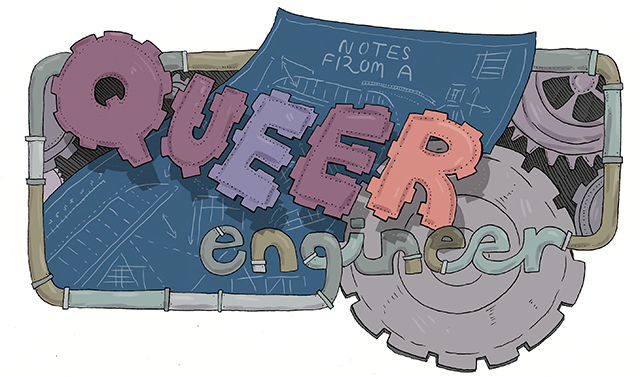
Header by Rory Midhani
“Is the Oculus Rift sexist?” That was the provocative question posed in a March 28 Quartz article outlining an investigation that computer graphics programmer danah boyd undertook during the late ’90s to investigate why 3D immersion environments made her female colleagues physically sick while male peers were unaffected. After a few years of cross-disciplinary research (including visual psychology experiments and interviews with trans people undergoing hormone replacement therapy), boyd concluded that there are two types of depth perception: motion parallax (which male-assigned bodies tend to prioritize), and shape-from-shading (which female-assigned bodies tend to prioritize). That virtual reality systems address the former but not the latter is an example of design bias which largely favors men — in a word, sexism.
As you can imagine, reactions to the article were very strong.
What struck me as I read the through long list of objections from commenters is that hardly any of them had to do with boyd’s research. Most of the complaints were in actually directed at boyd’s implicit position on the following two questions:
- Is intent necessary for something to be sexist? (boyd says no.)
- Can inanimate objects be sexist? (boyd says yes.)
I think there are some really interesting elements at play behind these assumptions, and I’d love to hear more queer/feminist perspectives on this. So let’s talk about it!
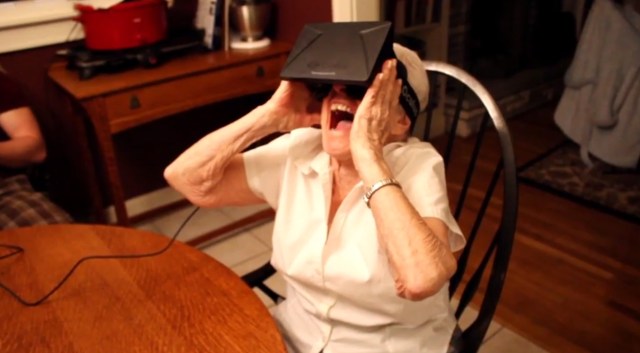
YouTube “My 90 year old grandmother tries the Oculus Rift” by Paul Rivot.
First up: is intent necessary for something to be sexist? I find this question interesting because I think it’s symptomatic of some of the massive anxiety people have around the language of feminism. In other contexts, the answers seem fairly straightforward. Do people sometimes do things they didn’t intend to do? Obviously yes. If an action done unintentionally has caused harm, even unintentionally, do participants hold responsibility for fixing it? Again, most reasonable people would say yes. So why do we get so stuck on these points once we enter the realm of sexism?
I think people recoil from the term “sexist” because they hear it as a shrill, denunciatory attack on the character of whoever is responsible. But here’s the thing: sexism doesn’t require malicious intent, and the problem doesn’t begin and end with Sterling, Cooper, Draper and Pryce. There are a million tiny ways that good people — myself included — can and do perpetuate sexism all the time, without even thinking. Calling something someone did “sexist” has nothing to do with said person’s character, because sexism is the default setting in most areas of our society. Even here, by focusing on intent rather than results, what we’re saying is that the offender’s perception of the situation is what really matters. This normalizes sexism and reinforces male privilege. Subverting sexism is usually the thing that requires conscious intent, not the other way around.
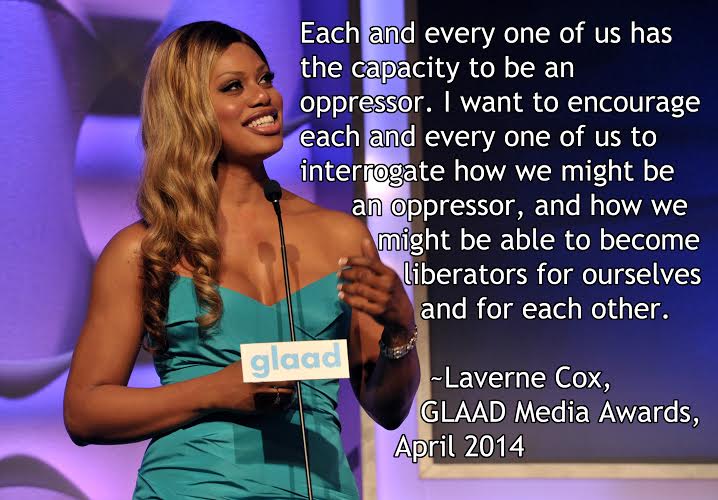
Laverne Cox dropping wisdom at the GLAAD Media Awards. Different context; still applicable.
So if intent isn’t required for actions to be sexist, does that mean that inanimate objects can be sexist too? Going back to boyd, she responded to criticism on her blog:
Sexism is prejudice or discrimination on the basis of sex (typically against women). For sexism to exist, there does not need to be an actor intending to discriminate. People, systems, and organizations can operate in sexist manners without realizing it. This is the basis of implicit or hidden biases. Addressing sexism starts by recognizing bias within systems and discrimination as a product of systems in society…. I think it’s important to grapple with the ways in which sexism is not always intentional but at the very basis of our organizations and infrastructure, as well as our cultural practices.
That seems to make sense. boyd makes an interesting case about virtual reality systems demonstrating sex-based discrimination, but I think many people have difficulty relating to it simply because the technology is a) uncommon, and b) use optional. For our discussion, let’s take a look at something more broadly used: cars.
Although women have been riding in automobiles for about as long as they’ve existed, car safety features have historically been designed and optimized for male-assigned bodies only. In a 2011 study published in the American Journal of Public Health, researchers from the University of Virginia’s Center for Applied Biomechanics found that female drivers wearing seat belts were 47% more likely to suffer a serious injury than male drivers in comparable crashes. According to the study authors, this is likely due to sex-based differences in neck strength and musculature, stature, and preferred seating postures, which were not sufficiently taken into account in car safety feature designs. Disturbingly, this study is considered the first to formally assess how a vehicle’s design affects male and female drivers differently; prior to 2011, most gender-based studies had focused on differences in driving patterns and risk-taking behaviors.
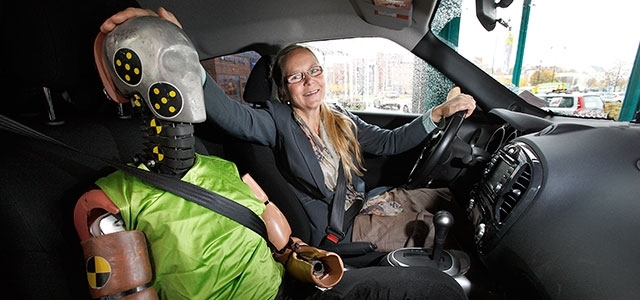
Last month, Gothenburg researcher Astrid Linder won the EU Champions of Transport Research Competition for her work developing a female crash dummy, as well as the first computer crash dummy based on the average woman. Via VTI.
In fact, there has been a long history of struggle between safety advocates and automakers over how much consideration should be given to different body types. The debate began in the late 1950s, when the emerging consumer safety movement began scrutinizing government regulation of the auto industry. They argued that regulatory focus should be put on improving car designs in addition to policing consumer behavior. Following the release of Unsafe at Any Speed, Ralph Nader‘s high profile exposé on automakers’ unwillingness to make road-safety improvements, public outcry lead to the passage of the National Traffic and Motor Vehicle Safety Act of 1966 — the first nationwide automotive safety standards. Automakers pushed back, particularly against Standard 201 for Interior Occupant Protection, which required the use of mannequins to check impact points during car crashes.
The standard called for the use of two models: one to represent a very large male body, and one to represent a very petite female body. Although the male model had already been developed (“Sierra Sam,” created in 1949 under a contract with the Air Force), no female model existed yet. Automakers argued that creating a second dummy was too complex and costly, and in 1973, federal regulators agreed. When full body crash test dummies were mandated, the two “extreme” models to show a range of body sizes were no longer required; instead, one model sized to represent the average male body was deemed sufficient.
A female crash dummy did not become a mandatory part of frontal crash tests until 2011. Because of long development cycles — and even longer consumer purchasing cycles — it will be years before the effects are fully realized on the road.
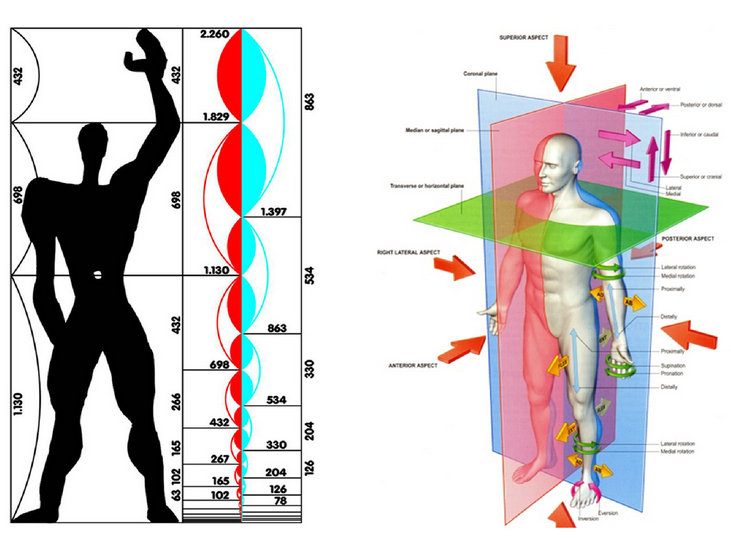
Left: Le Corbusier’s “Modulator” design created in the 1940s to set standards for the human body in architecture and mechanical design.”Human” here is presented as a 1.75 meter man. Right: The 70kg male body is often used as a standard reference model in anatomical textbooks. The 2004 edition of Gray’s Anatomy details anatomical features using the male body, showing female bodies only to show where they deviate from males, especially in primary and secondary sexual characteristics. Via Gendered Innovations.
As some have pointed out, “manufacturers and designers used to be all men,” so it’s certainly possible that female bodies were unintentionally overlooked. It’s an unfortunate but familiar output of the patriarchy, wherein straight, white, nondisabled, cisgender men are the catered-to norm, and everyone else is an afterthought (and the further an individual deviates from the standard model, the less consideration they receive). Cisgender men dominate the field of engineering, and they also hold most control over who receives funding and how said funds will be allocated. Is it any surprise that this system produces results prioritizing the wants and needs of cisgender men? Even so, does the fact that the logic is somewhat understandable make it okay? Does the fact that male privilege is ubiquitous also mean that it is right?
The bottom line is, harm is disproportionately being done to women. That’s sexism. I wish virtual reality systems and cars were the only relevant examples I could think of, but there are countless others.
So next question: what are we going to do about it?
Notes From A Queer Engineer is a recurring column with an expected periodicity of one month. The subject matter may not be explicitly queer, but the industrial engineer writing it sure is. This is a peek at the notes she’s been doodling in the margins.



What are we going to do about it? Make sure that 50% of engineers are women! Now how do we do that… that’s the real challenge.
As a decidedly non average sized human (5’0″) I was already convinced that there was a bias in the majority of design against the non average from personal experience, but to find there is a sexist bias on top of that is both fascinating and shocking and then not so shocking because Patriarchy.
This is so important! Super interesting article, I really enjoyed reading.
I love this article! As someone who doesn’t drive, I had no idea about all this stuff about cars. And as a woman-ish person in computer science, I like hearing about women and other not-cis-men in different engineering fields.
“Do people sometimes do things they didn’t intend to do? Obviously yes. If an action done unintentionally has caused harm, even unintentionally, do participants hold responsibility for fixing it? Again, most reasonable people would say yes. So why do we get so stuck on these points once we enter the realm of sexism?”
YES THANK YOU. I can’t tell you the number of people I’ve seen get mad about being called out on doing some racist shit. “But I’m not a racist!” No, I don’t think you are, but you did some shit that was racist. Racism and sexism have become such loaded keywords that to be accused of them is almost worse than to actually do them.
Oh my god yes! So good, and so interesting.
It happens in loads of different fields too, I always used to get so angry in psychology classes that the sensory homunculus was based on a cis male figure.
Oh man this is so interesting, really helps demonstrate how sexism is the background radiation of our society.
10 points for apt astrophysics analogy.
I would say that rather than inanimate objects themselves being “sexist”, they are a reflection of the sexist society that created them.
Fascinating! Really cool read.
I feel like reading this article made me smarter! Thanks, Laura!
Such a clear explanation of the way sexism pervades our society. Thanks for the article and I hope to read many more of your writings in the future.
The author postulates that sexism isn’t necessarily of malicious intent. But, it has been posed here as a matter of discrimination towards women. The word “discrimination” implies harm willfully done. If sexism is supposed to be considered free of malice in your initial example, why then are you wording it in a way to sway our opinions? It can just as easily be said that men have given themselves an even playing field, while unwittingly placing women at a disadvantage. Sexism is a word so heavily entrenched in misogyny that even in your attempt to bring forward a new idea of the word, you carried discrimination with it. Which, I gather, was somewhat beside the point?
I don’t think “discrimination” necessarily implies intent or willfulness, because that would require that the discriminator be aware of what they’re doing. Discrimination is so insidious because it entrenches itself within people’s minds where they express it without even realizing that they are discriminating. It leads people to accept assumptions as true without questioning them. There are plenty of behaviors that are racist, sexist, ableist, etc. without the actor perceiving that they are such.
I guess if I can perceive it this way there are other people who will, too. And I think this is an important message that has been explained in a biased way, which grates me. I know that the point of an opinion piece is to influence other people’s opinions. But to me this sounds like preaching to the choir, and the choir obviously likes the message. I’d like to be enlightened, but this didn’t do it for me because I felt like this article contradicted itself.
Wonderful piece!
This is excellent; thank you.
I would like to raise a question – and as early as now, I would like to apologize to everywhere here if I come off as offensive. I ask this for the sake of sating curiosity and not to incur the ire of every lovely person in this site – but what if the ‘intent’ of the creator of a thing is actually feminist or is against sexism but the thing is still inherently sexist, is that still a bad thing?
The invention that comes to my mind at this point is the sort of ‘chastity belt’ that was given the African girls to prevent rape. It actually ’empowered’ a lot of its users (according to interviews, they felt safer about getting out of the house and of living their lives without fear of getting raped. I cannot for the life of me remember where I read this) but many of the device’s critics were quick to point out that it did not solve the issue of prevalent violence against women and children in Africa and the belt was only a band aid solution. Worst, the device was also pretty much a ‘rape apologist’ contraption, since the problem were the rapists themselves and not the ‘vulnerability’ of the girls.
Interesting question! From the way you described it, it sounds like the belt itself isn’t hurting women — more the way it’s being presented as the singular answer to rape culture. I’d say that’s sexist people, not a sexist object. (Although I’m not that familiar with the chastity belt, so I could be wrong!)